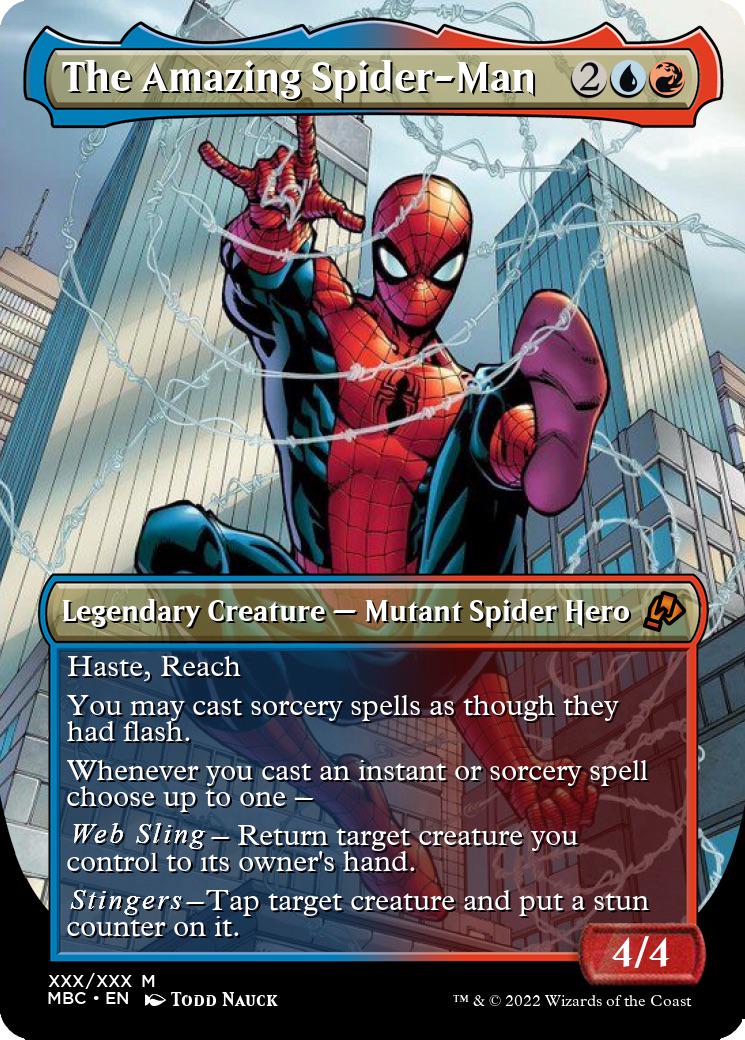In a universe where superheroes, comic books, and strategic card games intersect, a new character has swung into the spotlight, raising both eyebrows and card sleeves. Spider-Punk has made his audacious entrance into the Magic: The Gathering (MTG) universe, and what an entrance it is—not with a hidden preconstructed Commander deck but with a seismic bang felt across kitchen tables and conventions alike.
For the uninitiated, Spider-Punk, a rebellious underworld version of the beloved wall-crawler from Marvel Comics, isn’t your typical superhero—nor is he your average Magic card. While some fans waited eagerly for MTG to unveil Spider-Man-themed Commander decks in their Spider-verse inspired set, they received something else entirely. Spider-Punk jumped in with a unique two-mana card that left some players scratching their heads and others clapping their hands in gleeful anticipation.
Spider-Punk’s cost appears deceptively modest on paper, a mere two mana. However, it’s his Riot ability that first draws attention. Players can grant him haste or a +1/+1 counter, allowing either an immediate attack or a more robust form, adding layers of strategic flexibility. Yet, the true allure of this punk lies not in these options; it’s his larger-than-life attitude he imposes on the game itself. When he hits the battlefield, all spells and abilities become uncounterable, and damage becomes unavoidable—an anarchic charm that warps the rules you thought you understood.
Suddenly, with Spider-Punk on the battlefield, familiar safety nets, like the ubiquitous Counterspell and the protective haven of Teferi’s Protection, render themselves obsolete. Players accustomed to holding their wiles behind these shields find themselves welcoming a mix of freedom and chaos. For some, this is a defining kind of red disruption they’ve long awaited—a way to burn through defenses and head straight for the heart.
But wait, why the division? Why does this web-slinger split the MTG community like a crack in a multiverse portal? It’s simple: the disruption swings both ways. When it’s your turn, Spider-Punk’s devil-may-care effect clears the runway for a triumphant move. But once you surrender your turn, you effectively hand over the reins, afford your opponents the same unbridled powers you enjoyed. It gives those pesky rivals with instant-speed threats like Lightning Bolt and Fireball an unfair dimension of power, turning Spider-Punk’s gift into a potential liability.
To complicate matters, Spider-Punk’s on-field presence is anything but bulletproof. His small stature makes him an easy target for whooping removals from the table—before you have even laid the finishing blow. His Achilles’ heel invites not just removal tactics but also a steep learning curve for players hoping to harness his unholy powers effectively.
Yet, despite his Jekyll and Hyde nature, anticipation for this punk card is practically volcanic. Presales depict an escalating demand: regular copies are edging into the low twenties, while foils shimmer upwards of sixty dollars. Special borderless editions, which could adorn any collector’s display, attract valuations between forty-eight to fifty-five dollars. This frenzy mirrors the demand seen when theoretical anarchy meets real-world collections.
Still, budding chaos is not limited to Spider-Punk alone. The broader set introduces a rich gallery of tempting—if downright formidable—additions to the MTG environment. Unforgettable is the Soul Stone, an indestructible artifact potentially heralded as the crown jewel of chase cards for the set. It’s a mana source but simultaneously a gateway to bringing the departed back to the battle, all in one unbreakable parcel.
Other standout figures are notably led by Doctor Octopus, not only as a card emphasizing villain tribal strategies but tucked within it, a clever card draw engine. Meanwhile, Green Goblin can effortlessly steal the show with Mayhem, a discard-centric mechanic that electrifies as it transforms what’s tossed aside into resources. Cards aren’t merely exiled to the grave but converted into tools for ambition and plunder.
As players continuously circulate these new additions into their decks, speculations mount. Will Spider-Punk radically redefine how Commander be played, or is he the latest gyration in a long history of MTG evolutions? Whatever the outcome, Magic players know this much—it’s all about mastering the spider’s web rather than getting caught in it.
These new inclusions, Spider-Punk ever leading the punk parade, promise a dynamic shift for MTG enthusiasts. Whether transforming strategies or challenging status quos, the stage is set, and its actors hold the potential to teach both new tricks and warn about how to handle a nimble nuisance. Ready your decks, prepare your spells, and let chaos reign, one Spider-Punk at a time.
